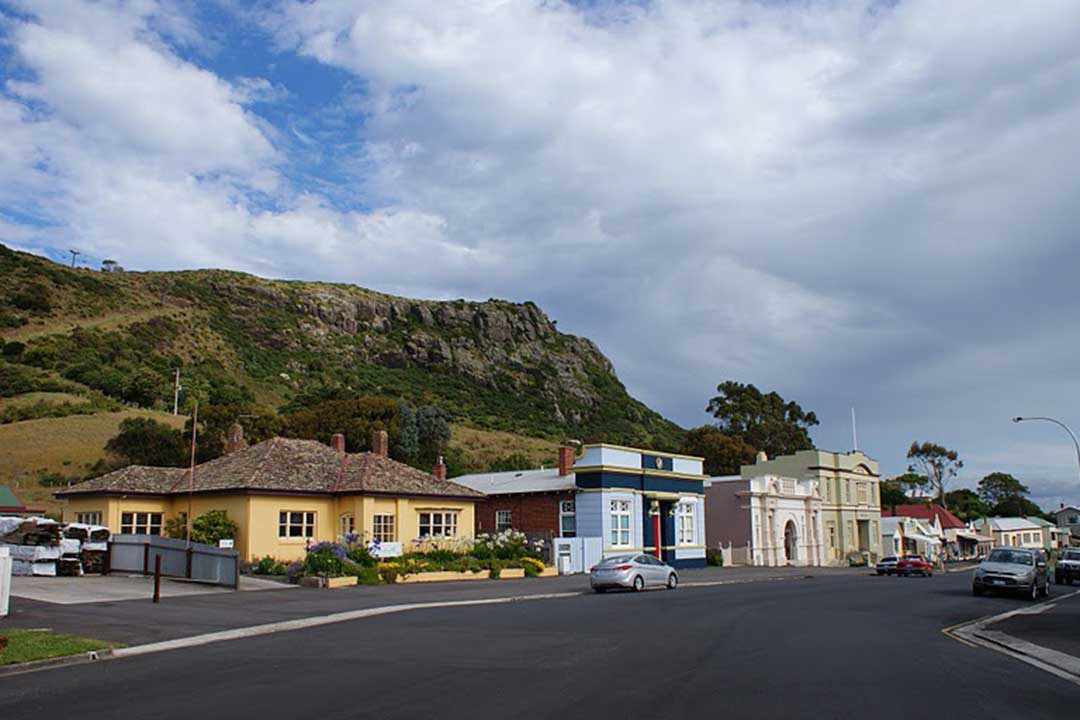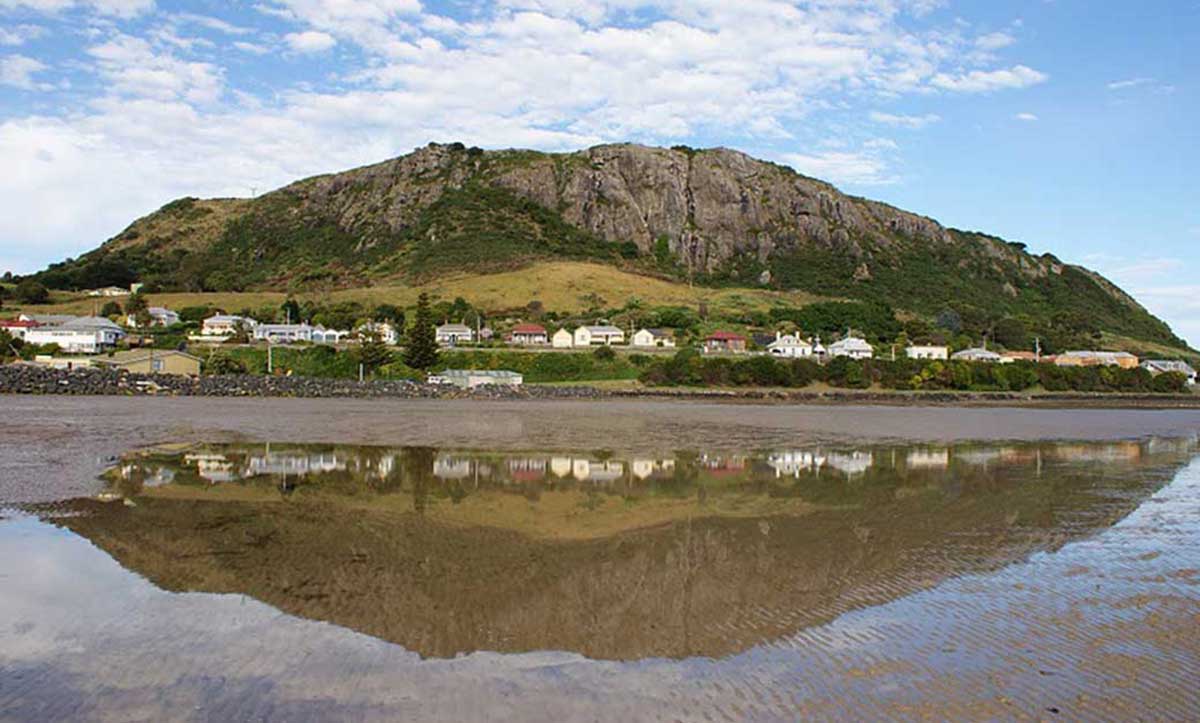
Stanley: A Brief History
Approximately 70 million years ago, this area of the world was actively volcanic. Tasmania had recently separated from Gondwana land and was taking the shape it now bears. About 12,000 years ago the sea level rose and Tasmania was separated from the Australian mainland. Now isolated on the island, Tasmanian Aborigines lived in harmony in tribes in various locations.
The geological survey of Tasmania has confirmed that Stanley's most dominant feature - The Nut - is the stump of an old volcano. The original core was built of fragments mainly volcanic rock ejected by explosive eruptions. Molten basaltic lava welled up the feeder pipe and in places intruded into these fragmental rocks and formed a lava lake in the crater where it solidified. Weathering and erosion since has removed all the weak rocks which built the cone so that the hard basalt of the lava pool now stands up as a conspicuous landmark.
In 1798, Matthew Flinders and George Bass circumnavigated Tasmania, having suspected that the land mass was an island. On this journey they sited the cliffy, round lump, in form much resembling a Christmas cake. They called it ‘Circular Head’ and it wasn't until the 1850s that it started to be called The Nut. Circular Head has since been used to describe the whole area. The cliffy, round lump is now known as ‘The Nut’. It rises abruptly 143 m from the sea to a flattish top, although a plaque on the way into Stanley insists that the Nut is actually 152 metres high.
During the 29 years after Bass anf Flinders sailed by, Circular Head was the territory of sealers. Many of these were run-away convicts living on the islands of Bass Strait. They had a reputation for being rough and lawless and many stole local aboriginal women to be used as slaves and wives.
Having heard of the agricultural successes this newly discovered part of the world was providing, a group of London based merchants, businessmen and politicians established the Van Diemen’s Land Company (VDL Co.) in 1824. They hoped to make a fortune from fine merino wool on a large scale. The company was originally promised a single holding of highly favourable land. Instead, in 1826 they were granted a huge tract of unsettled land in the mainly forested remote north-west.
In 1827 a sheltered port was opened below The Nut to facilitate the landing of stud livestock, implements, craftsmen, labourers and assigned convicts. Soon afterwards Edward Curr, chief agent of the VDL Co. had the area explored, surveyed and developed. Company employed surveyors deemed the area to be ideal for raising merino sheep. This wasn’t exactly true. The VDL Co. was a failure as a major wool supplier. Other ventures such as breeding of stud horses, cattle grazing, and a deer park did little to alleviate the financial problems experienced by the company.
Highfield Estate
Up on the hill behind Stanley on its nouthern site is the Highfield Estate Historic Site, built in 1832-1835 for the chief agent of the VDL Co, which opened up Tasmania's north-west. The best way to get up there is to drive straight through town on Church Street, past the cemetery and Godfreys Beach along Green Hills Road. On your way to the top is a bay to pull into for a classic photo of the town.
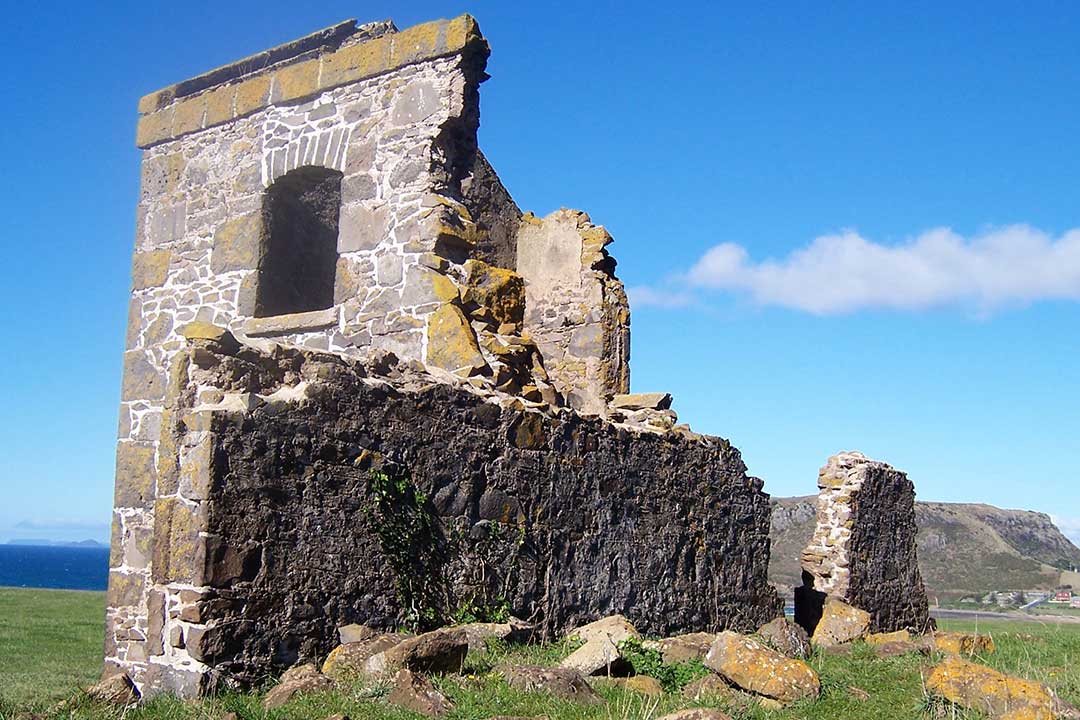
At the top of the hill is the bullyard and the ruins of Barracks for the assigned servants, with walls of fieldstone and large bluestone blocks at the corners. The barracks were built in 1834 and occupied from 1836. There were 41 convicts assigned to the Circular Head establishment, half of whom were housed in these barracks.
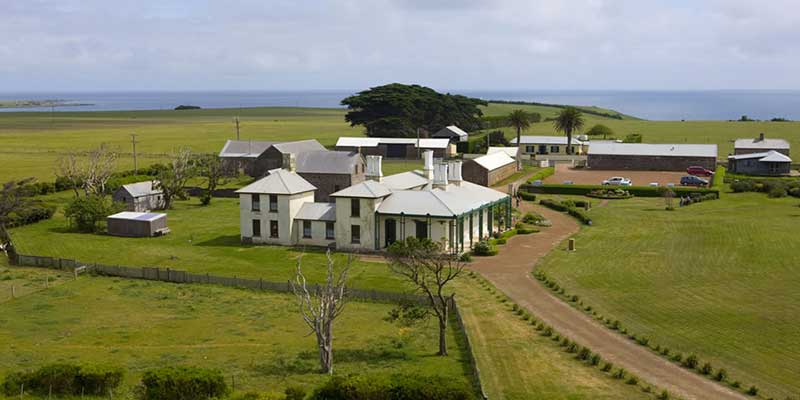
The Highfield Estate was built in 1835 as the residence of the Chief Agent of the Van Diemen's Land Company and was for a time the centre of operations for the Circular Head establishment. Nuilt of sandstock bricks (now stuccoed), this single storey houses comprises of 12 rooms, and an attic. Features include a high verandah, tall French windows, curved bay windows and unusually tall windows. The design is attributed to Henry Hellyer, and an addition was designed by Joh Lee Archer in 1843, although only part of this was carried out.
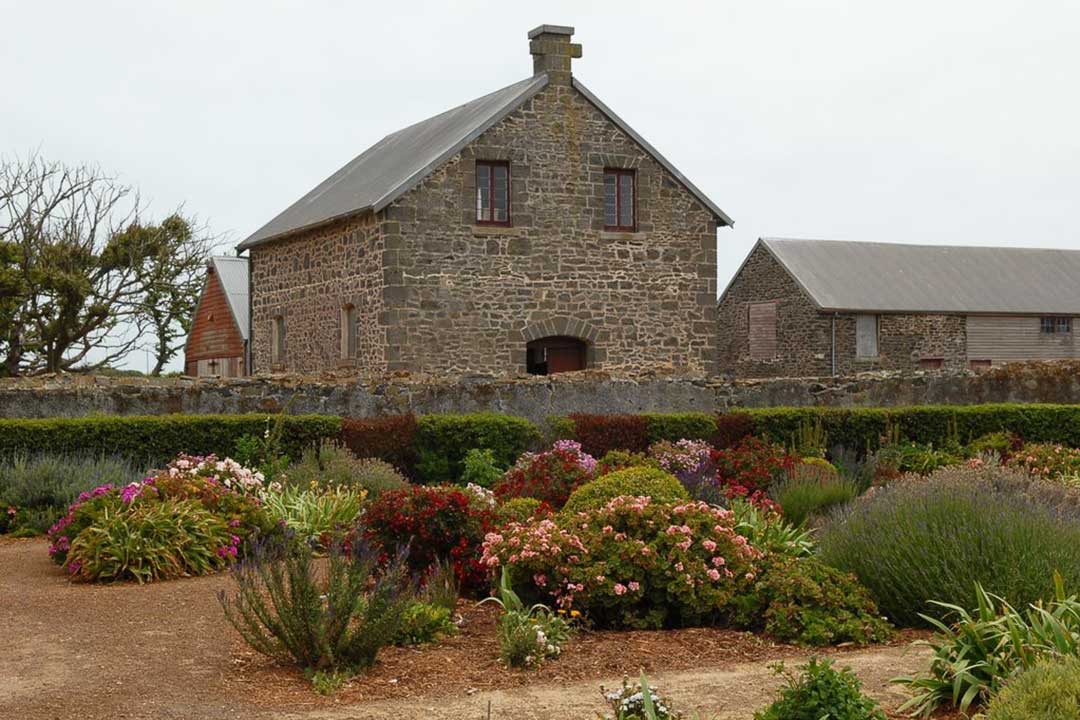
There are a large number of bluestone outbuildings, including a chapel, servants' quarters, barns and stables. Today, the house has been restored after the state government bought it the early 1980's. Visitors may look through the old building and grounds, with information signs acting as the interpretation signs. Guides tours are available.
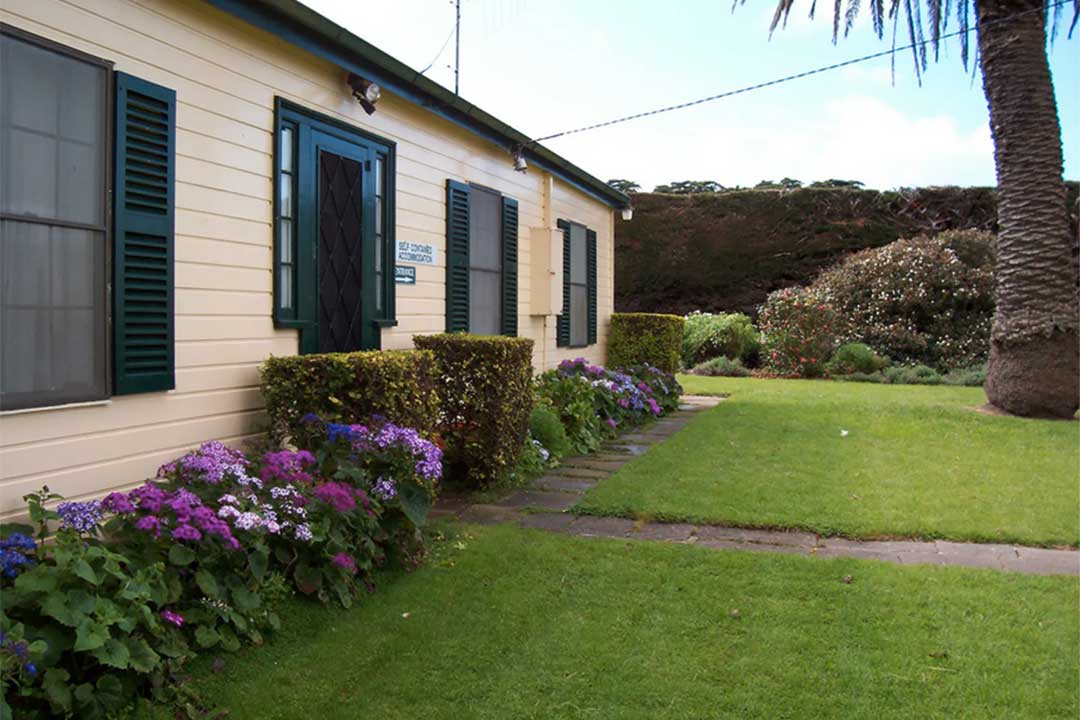
Across the road from Highfield Estate is what is known as Stan Anthony's Homestead. The house was built C. 1926 by the Van Dienem's Land Company and would have been one of the first buildings erected at he Circular Head settlement, and was the first homestead in the area. The single story timber cottage is now re-lined with weatherboards. Edward Curr, first chief agen for the Company, brought his family there in 1827. Henry Hellyer committed suicide in the house on on night of 9th September 1832, leaving a note which is held in the Tasmanian Archives. He never saw the completion of Highfield Estate which he had designed.
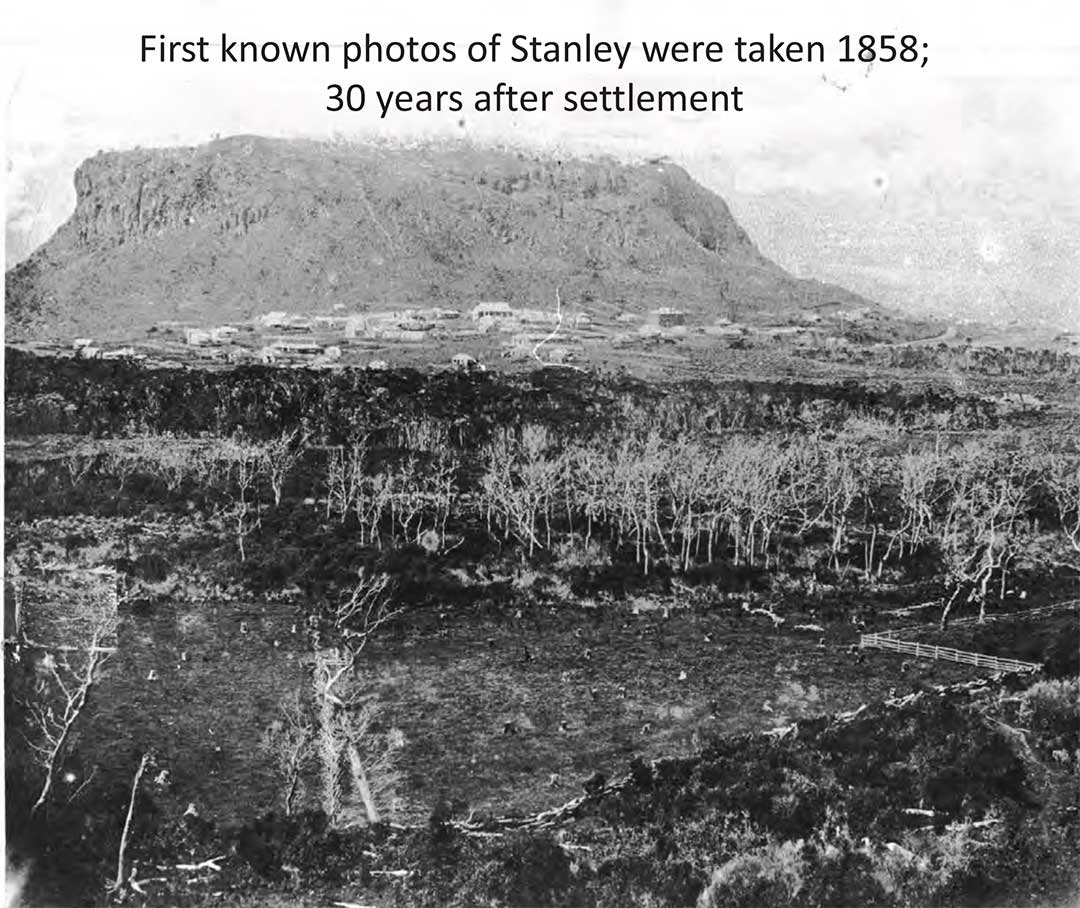
In the 1840’s assigned convicts were withdrawn from service. The company turned it’s attention to the sale and lease of its holdings. They contracted John Lee Archer to design a town in 1842. Stanley as we know it started with the first gazetted street plan of Stanley drawn up by John Lee Archer, renowned architect and civil engineer and recently appointed police magistrate, in August 1843. John Lee Archer prepared a second town plan in 1848 when the population of Stanley was listed as 127 men, 41 women and 65 children. At that time Stanley had 20 shops and stores, an Anglican Church, parsonage, school and police office.
It was named Stanley after Lord Stanley, British Secretary of State for the Colonies in the 1840s. Leasing blocks of land by the VDL Company began as soon as Archer had finished his survey but it was not until 1851 that the first blocks of land were sold to independent settlers.
Although the importance of the town as a port has fluctuated over the years, it has always been significant, and initial settlement extended in a line from the harbour to a broader elevated area cut into the lower slopes of The Nut. The harbour includes wharves and sea walls which provide archaeological interest and enhance the character of the town. 1906 saw the establishment of the ‘Circular Head Chronical’ newspaper in Stanley.
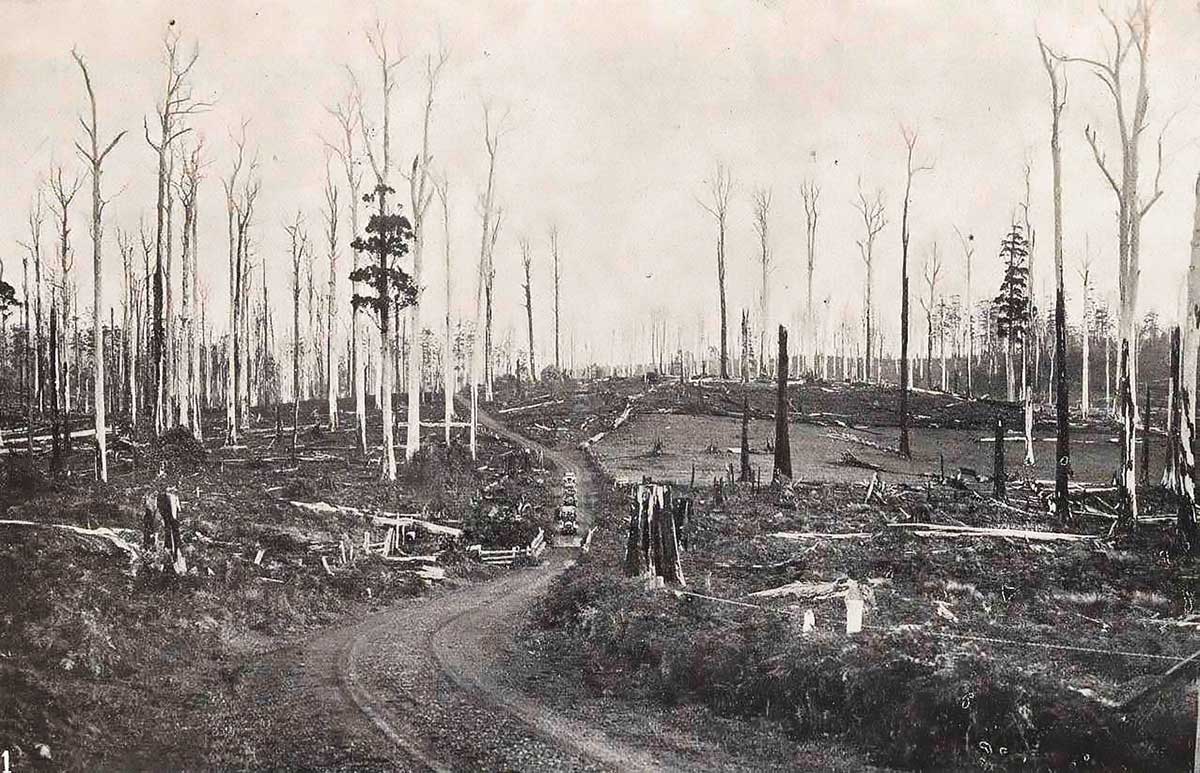
The coast road to Stanley (now Bass Highway) in the vicinity of Sisters Creek. Photo TAHO Weekly Courier 1914
A map of roads in 1870 shows roads on most present-day routes, except in the mining areas of the west coast. This included the Coast Road, known today as Bass Highway which was little more than a dirt track up until the 1860s. In 1880 the first road coach service between Stanley and Burnie travelled down the unsealed road. The trip took 6-7 hours to complete. Around this time, timber, fishing, dairy and agriculture industries were all booming.
The Street Names of Stanley
John Lee Archer not only laid out the streets of Stanley in 1842, but also named them, predominantly after past and present directors of the Van Diemen's Land Company.
Cripps Street - Joseph Cripps (1765-1847), London Director, VDL Co.
Harrison Street - Thomas Harrison, London Director, VDL Co.
Rougemont Street - George Rougemont, London Director, VDL Co.
Pearse Street - Brice Pearse (1800-1866), London Director, VDL Co.
Fletcher Street - Edward Fletcher, London Director, VDL Co.
Marshall Street - Edward Marshall, London Director, VDL Co.
Wilson Street - Francis Wilson, an inaugural director of the VDL Co.
Browns Road – William Ruddle Brown (1789-1847), London Director, VDL Co.
Alexander Terrace – Henry Alexander (1787 - 1861), London Director, VDL Co.
Hale Street – C.G. Hale, London Director, VDL Co.
Edwardes Street - Thomas Dyer Edwardes (1807 - 1885), London Director, VDL Co.
Church Street – the street on which land was set aside for 2 churches
Victoria Street – Queen Victoria
Albert Street - Albert, Prince Consort (Prince Albert of Saxe-Coburg and Gotha), husband of Queen Victoria
Ford Street – Frederick Wilbraham Ford was originally planning to enter the Church of England ministry but instead emigrated to Tasmania arriving in Launceston in 1841. He eventually married Ellen Eliza King and moved to Circular Head. He became a Van Diemans Land Co tenant farmer in Forest, Tasmania in 1845. He leased Highfield in 1857, ran a large produce and commission business, grazed large numbers of sheep and cattle on the Islands off Circular Head and acquired land at Marrawah. He died in 1893.
Stanley - named after Lord Stanley, Edward George Geoffrey Smith-Stanley (1799-1869), 14th Earl of Derby, British Secretary of State for the Colonies in the 1840s.
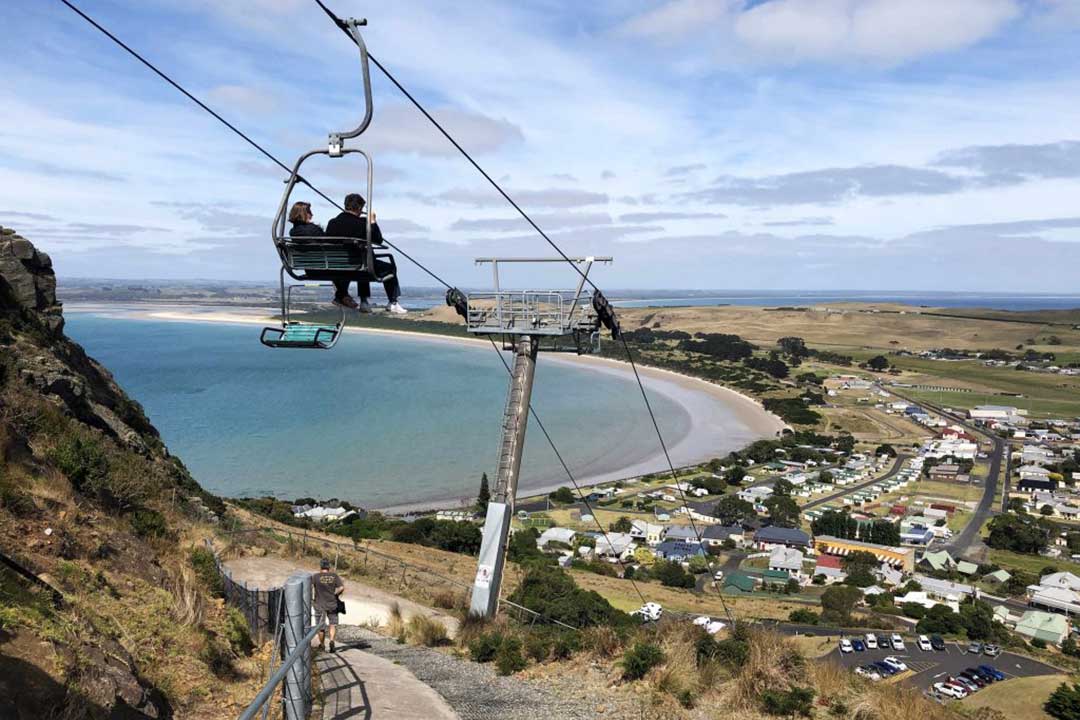
The Nut Chairlift
The Nut Chairlift
The original Access chairlift at Mt Baw Baw snowfields was reused to build the chairlift on the Nut at Stanley in 1975. The Chairlift was designed and manufactured in Austria, to maximum safety and comfort standards. It traverses a distance of 250 meters, rising 95 meters. After a leisurely five minute ride to the top of The Nut, you can explore the plateau, soak up the incredible views and take advantage of the superb photographic opportunities.
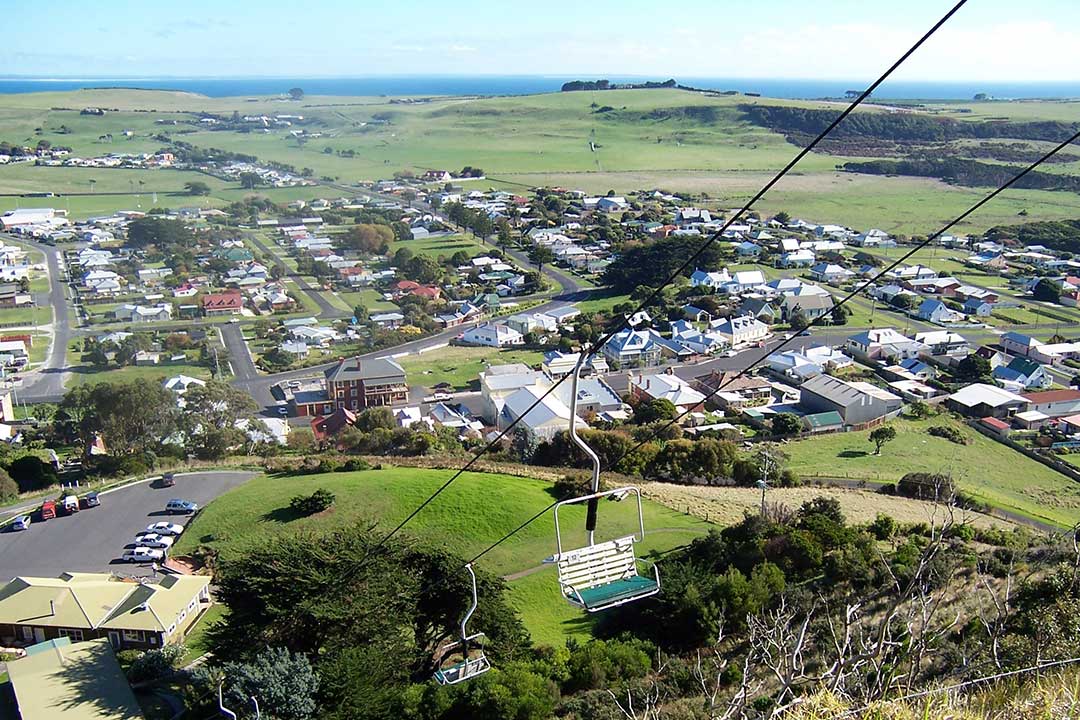
The Nut Chairlift
There is a circular walking track of approximately 2 kilometres around the summit and several viewing platforms from which to survey the panoramic views. You will find bathroom facilities, disability access, picnic areas with gas barbeque, and for those seeking a warm bite to eat and a great coffee, a friendly cafe. The Chairlift is open from the first Thursday in September until the last Wednesday in May.
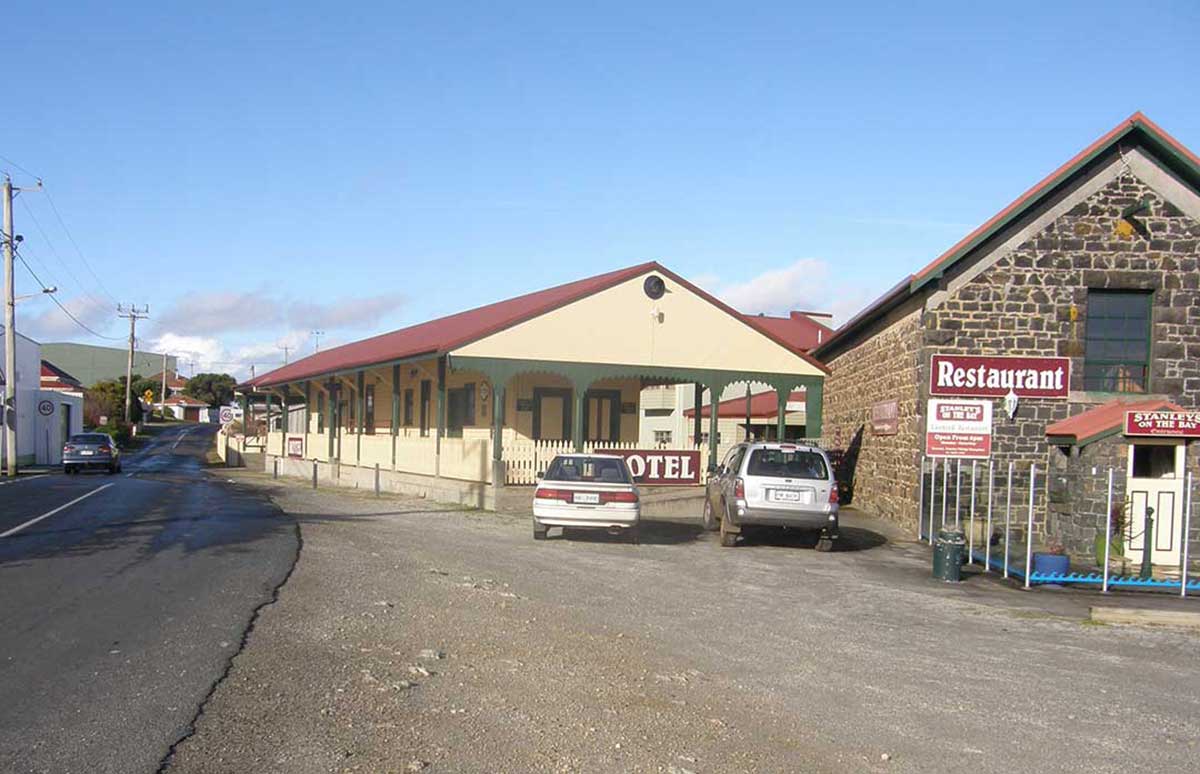
Former Stanley railway station
The Coming of the Railway
The railway came to Stanley in 1911, the first railway link was completed between Stanley and Trowutta. In 1913, Stanley was linked by a single narrow gauge line from Burnie. Known as the Far Western line, it was then extended from Myalla station to Irishtown (1919), Smithton (1921) and Wiltshire (1922). From Burnie to Wynyard, the line closely follows the coastline of Bass Strait, for the majority of route between the main road and the water, before turning inland and passing through the south of Wynyard township.
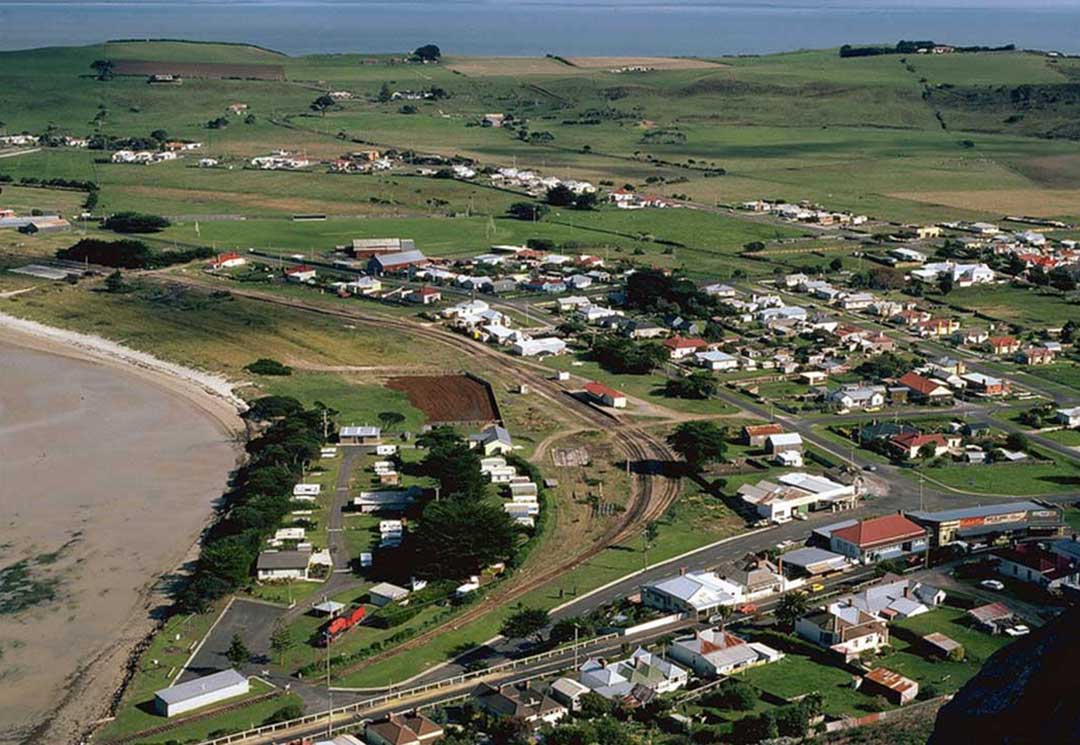
Railway line into Stanley, 1983
In the 1970s, with the increase in car ownership, funding for highways and the loss of goods consignments, the TGR's operations suffered, and passenger services were eventually ceased across the network. Hobart suburban services ended in 1974, with passenger services ending entirely in 1978. At present the line is intact and generally clear form Burnie to Wiltshire, but is not available to traffic. Cabins of the Caravan Park now occupy much of the northern end of the former railway yard. Proposals to rebuild the line in recent years have suggested a new alignment following the highway nearer the coast.

Far Western Line timetable, 1957
Operations in the area have varied over the years depending on where locos and crews have been based, and also the dominant traffics. From the 1980s, the dominant traffic on the line was outbound logs from Black River (just east of Wiltshire) with some supporting traffic to/from Stanley for the King Island shipping service, and to/from Smithton for the local processing industry. In 1990 the two extremities of the line were closed due to dwindling traffic, and outbound logs and silica stone, and inbound fertiliser traffic at Wiltshire became the sole reason for the line.
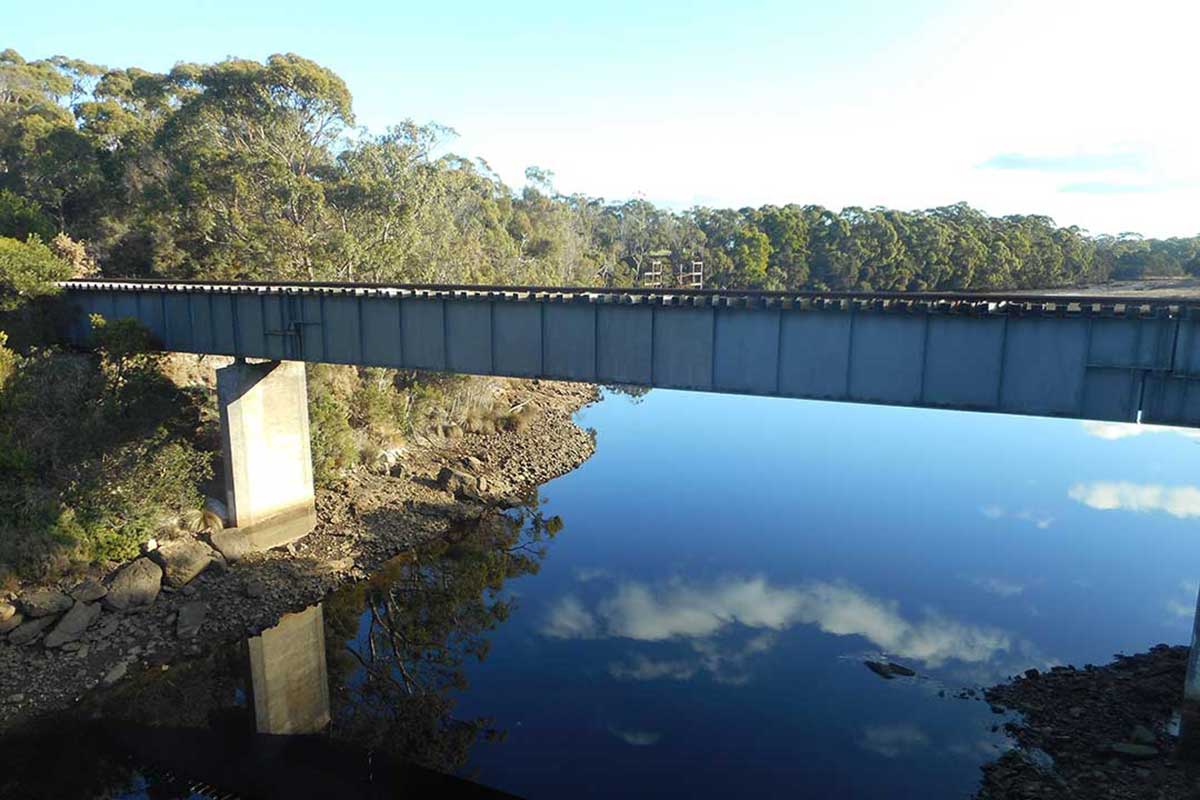
Railway bridge across Black River

